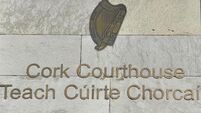Government ‘favours bonds to finance Anglo rescue’
Under a plan being weighed up, the Government would inject as much as €40bn of notes of as long as 40 years in duration into the bank, said one source. These may be used as collateral for ECB funds, replacing €30bn of promissory notes used for the bank’s 2010 bailout.
The ECB has been in “intense discussions” on “enhancements” to Ireland’s programme, ECB executive board member Joerg Asmussen told reporters last Friday. ECB and Finance Department officials declined to comment on the plans yesterday.
















